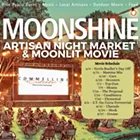An art undergrad at Eastern Washington University, Brown has spent most of autumn quarter at Second and Division from 8-8:30 am weekdays. In a business suit and matching briefcase, Brown holds up signs like "Help. My iPod is full." There in front of the First Covenant Church, just down where street folks gather at St. Joseph's, Brown's performance (as in performance art) unfolds.
Responses include ambivalence, anger, laughter. "You're full of shit," a man yells from his car. "He's not serious, is he?" a well-coifed woman asks. Well, yes and no. Some have actually given him money (he has the necessary peddler's permit), like the guy in the SUV who empathetically forked over $5 in response to Brown's sign that read: "My Suburban needs new snow tires." All told, he's collected about $20.
He's not doing it for the money (duh!) or the publicity, although that has come as morning commuters begin to recognize him. Yet his act went unreported for almost two months -- a comment on the desensitization of his audience, not a reflection on the quality of his performance or potency of his message. After all, what does it take -- beyond a 16-ounce double latte -- to grab people's attention, especially at that hour? Has the glassed-in box quality of the automotive experience so emulated the television that we are simply tuned out to stuff like this?
Maybe people just don't get what Brown is saying because the "medium is the message" and they don't get the medium. Wouldn't be the first time. (Allan Kaprow, the unofficial father of performance art, once did a piece in which people licked jelly off an old car. Maybe it was about a traffic jam.) How does the performance artist deal with this dilemma: to explain or not to explain? Brown turned out to be willing to talk, if only people would take the first step. Not many have, he says, although folks on the street have been generally supportive.
Regardless, everyone should get the irreverence of the signage, particularly with its emphasis on technology and commodity (unless, of course, you agree that a full iPod constitutes a catastrophe). Simple, right? Like the way Jackson Pollack just splattered paint on canvas. Or not so simple at all.
First, performance art is inherently anti-capitalist, anti-commercial. Steeped in the counterculture of the '60s, performance art mostly exists outside the free trade system: It's resolutely not for sale. Although some early performance artists like Joseph Beuys made use of conventional art venues, most did not and do not; they take their art out of the gallery and onto the street. Thus Brown presents an art form that comments on the commercialization of art, as well as the commodity-driven psyche of modern culture.
Second, Brown is turning the tables on the conventional art viewer who goes to a place to view art in a location that has been officially "sanctioned" as a bastion for "real" art (e.g., a gallery or museum). Instead of (passively) seeing art that is framed, people are (actively) part of the artwork viewed through the frame of their car window.
Further, Brown is the artform, both because he's on display and because he holds signs (many of which came from friends' suggestions) that are meant to be read and reacted to. "Will refinance loan for food." Consider the parallel to advertising, which is pervasive in our society, especially on our clothing. Tommy Hilfiger on your chest, Nike on your shoes, even those beloved Bulldogs on your butt ("Go Zags," one word per cheek). Brown isn't advertising, though. He's imploring: Please look, think, incorporate this new insight into your life. Evolve; effect change. Whereas advertisement is self-serving, Brown is just serving. He offers us an alternative way of looking our role in the world.
To that end, his signage may as well be a mirror. Look, he's saying. See the sign? See the signs?!
Brown may have been performing for more than seven weeks, but he's been "discovered" right around the holidays, a season rank with ridiculous commercialization. On Friday, TV news will inevitably display the gluttonous day-after-Thanksgiving retail numbers, followed by a sound bite on how food banks need help feeding the multitudes who in turn just want to put food in the mouths of their children.
And maybe we'll all feel appropriately guilty for having stuffed ourselves on turkey or splurged on the latest Xbox. But then that's not the point, because guilt doesn't solve anything.
How about gratefully recalling the little things -- safety, warmth, a rewarding career, embracing a loved one finally home from the Gulf, the freedom to express our opinions on a street corner (with or without a chicken suit). And the opportunity to make a difference, one person at a time.
Now that's something to be thankful for.
















